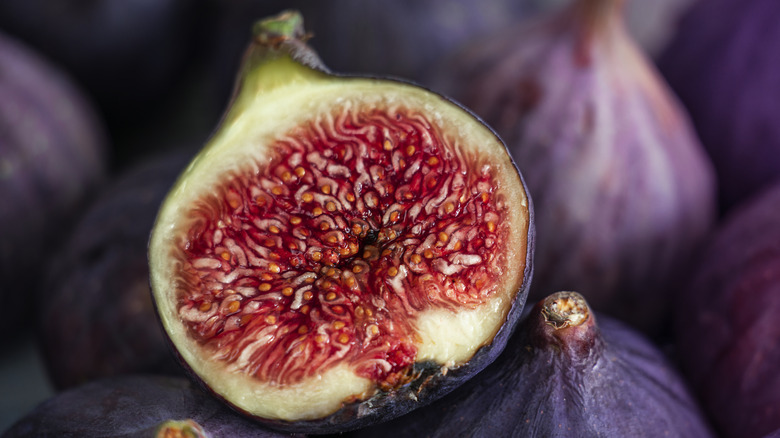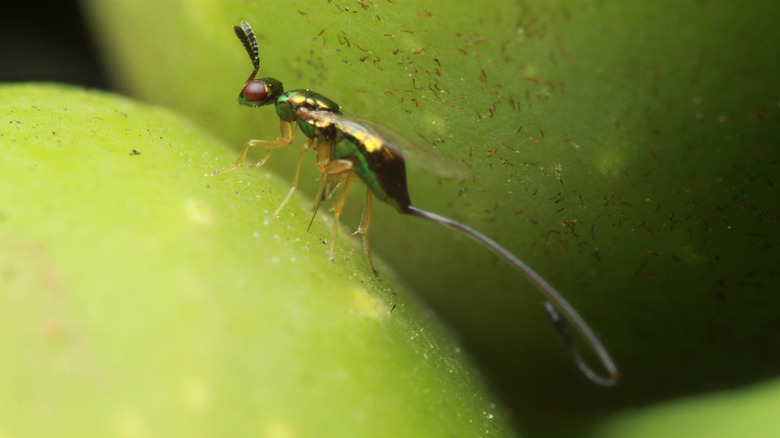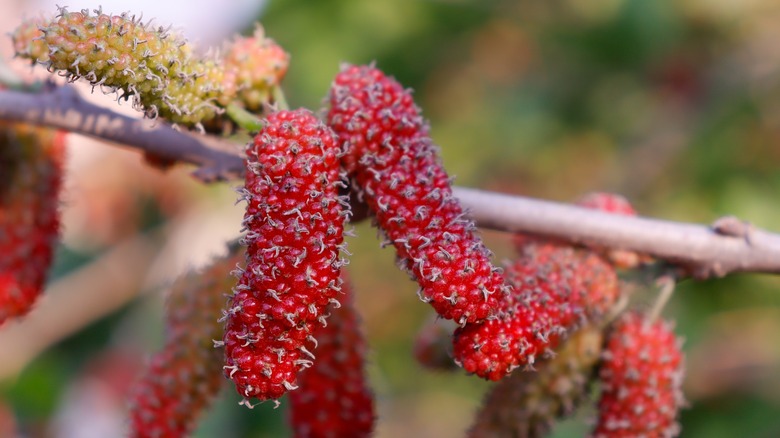If A Fig's Not A Fruit, Then What Is It?
Most of us learn early on that a tomato is not a vegetable, despite its savory flavor. Because tomatoes sprout from flowers, they grow to contain seeds, which technically classifies them as a fruit. After learning this, it is our birthright to go through our mental Rolodex of food and name every kind of produce with seeds: squash, eggplants, pumpkins, cucumbers, peppers, and legumes are also unlikely members of the fruit family.
In listing all the world's crops, one will eventually come to the fig. You know, that sweet chewy food sometimes wrapped in bacon and served as an hors d'oeuvre at fancy parties. When ripe, the inside of the green or purple food appears to contain tons of seeds peppered throughout a network of sweet, juicy flesh bordered by a soft, greenish pith. Oddly enough, those little things aren't your typical seeds. They're clusters of tiny flowers, meaning a fig is not a fruit; it's an inflorescence.
Wasps are good for one thing
Wasps, like mosquitos, are one of those insects that seem to have no other purpose other than to sting people who invade their territory. Unlike their stinger-bearing cousin, the bee, it's hard to excuse their attacks in the name of mass pollination. But if you love figs, you have wasps to thank.
The fig wasp is the only pollinator small enough to weave through a fig's dense interior of inverted flowers through a tiny opening called the ostiole. Indeed, the insect's entire purpose in life is to fertilize the bulbous inflorescence. When the queen wasp dies after laying her eggs inside of a male fig, her body is digested by enzymes, providing nutrients to the fig's ovaries — which, fun fact, is the reason figs are not technically vegan. Once the eggs of the perished queen hatch, the new wasps mate, collect pollen and carve a tunnel to the outside, where they fly off to pollinate more figs.
Figs aren't the only fruit-like flower
Figs are the only fruit-like flower that their own personal wasps pollinate, but they're not the only edible inflorescence on the bill. Mulberries, which are pollinated by wind and resemble elongated blackberries when ripe, are also technically clusters of inverted flowers. The purple part that we eat is called the sepal.
Other members of the flower family that you might find at the farmers market include broccoli, cauliflower, cabbage, artichokes, and capers, which are treated as veggies but are immature flower buds.
Perplexingly, some say the edible flowers that chefs use to decorate fancy dishes are considered vegetables. That may sound like a botanist's idea of a joke, but it's true. The petals of citrus blossoms, violets, and other flowers that we eat are technically versions of leaves. If your brain hurts as much as ours does trying to keep track of all this, just remember the stuff about the figs.


